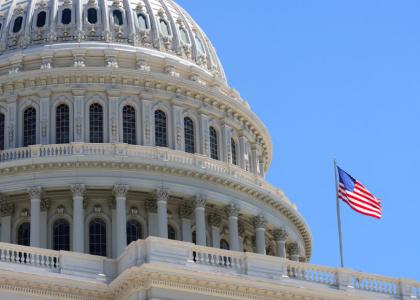Yesterday, the Department of Energy (DOE) issued five new efficiency standards, culminating a decade of energy efficiency progress that began under President George W. Bush. The new standards, the last of many developed during the Obama administration, will save consumers money, help meet the nation’s energy needs and reduce environmentally harmful emissions, including greenhouse gases. However, each of these new standards must clear one more hurdle before they are truly complete, which means the Trump administration will get the final word on this last batch of Obama-era standards.
First, the new standards. They cover an eclectic mix of products. The first national standards for uninterruptible power supplies, portable air conditioners and swimming pool pumps, which are based on a consensus agreement, each deliver surprisingly large savings. For pool pumps, California has led the way with pool pump motor standards and Arizona, Connecticut, and Washington have followed. California and Oregon have previously set standards for uninterruptible power supplies as part of their battery charger standards. Building on this state leadership, the new DOE standards provide a consistent national standard for these products rather than state-by-state regulation.
For walk-in coolers and commercial boilers, DOE’s latest actions would update existing national standards, originally signed into law by George W. Bush and his father, respectively. Manufacturers and installers of walk-in coolers negotiated the walk-in cooler levels with DOE and other stakeholders (including ASAP) after a lawsuit invalidated some earlier standards. The commercial boiler standards modestly increase the minimum levels for the heating equipment used in many mid- to large-sized buildings.
Altogether, this batch of new standards will save consumers and businesses $15 billion to $35 billion, according to DOE’s estimates. My colleagues Joanna Mauer and Chris Granda have described each in more detail in separate posts (pool pumps, portable air conditioners, uninterruptible power supplies, walk-in coolers, and commercial boilers).
None of these standards has been especially controversial. But, in each case, the incoming Trump administration will get the final word. Under recently-instituted DOE processes, final rules must be available for public review for at least 45 days before DOE can send them for official publication in the Federal Register. Standards published in the Federal Register after President-elect Donald Trump’s inauguration will be at the discretion of the new administration.
One exception: the new swimming pool pump standards are exempt from this 45-day review period, because DOE is adopting them under a special process permitted for consensus-based standards. But, this special process also permits the DOE Secretary to withdraw the new standard if significant objections are raised within the next few months. (The walk-in cooler standard is also a consensus-based standard, but DOE chose to adopt it through the process requiring the 45-day review period).
So, what does all this mean? Donald Trump and his DOE Secretary-designate Rick Perry, if confirmed by the Senate, will get the final word on each of these new standards.
Needless to say, the new secretary comes at energy policy from a different perspective than his immediate predecessors, and he’ll want to review all sorts of matters handed off to him. Undoubtedly, he will hear from some advisors that anything to do with the Obama administration should be deep-sixed.
But there is reason to hope based on his record in Texas and those of previous Republican administrations that he’ll take a more pragmatic approach. Rick Perry knows something about conservation standards. As governor of Texas, he signed a package of water conservation standards into law. The 2009 state law, passed as an element of the state’s response to persistent drought, shows that even deeply conservative lawmakers can embrace the need for reasonable standards.
Perry is not the first conservative governor of Texas to come around to support standards. As president, George W. Bush signed many standards into law as parts of the 2005 and 2007 national energy laws. Indeed, the enormous progress achieved on new standards during the Obama administration began under the Bush administration. After passage of the 2005 law and settling a lawsuit over many missed legal deadlines for updating standards, the Bush administration ramped up standards work.
The trajectory of the Bush administration was not unlike that of another famous conservative. After initially refusing to establish any standards, President Ronald Reagan signed the original 13 national standards into law in 1987. Each learned that a balanced and cost-effective approach to meeting the nation’s energy needs must address not only the amount of energy produced but also the amount consumed. In 2015, US electricity usage was about 13% lower than it would have been absent any standards.
And that balanced approach has led to real-world benefits for everyday American families. We estimate that the typical household spends about $500 less a year on utility bills thanks to existing national standards
Interestingly, a poll released last week showed that Trump voters also support national standards. Seventy-six percent support “requiring manufacturers to make appliances more energy efficient.”
Let’s hope that the new administration starts with the same practical approach to efficiency standards that Reagan and Bush grew to embrace. With decisions due in the very first few months of new administration, we will know soon.




